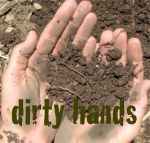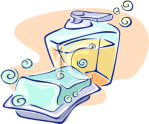Swine Flu Update > 10 Things You Should Know About The H1N1 Virus This Season
 Here you will find updated information about the H1N1 Virus (Swine Flu) as we’re heading into the fall and flu season of 2009.
Here you will find updated information about the H1N1 Virus (Swine Flu) as we’re heading into the fall and flu season of 2009.
The global swine flu epidemic has sickened more than 1 million Americans and about 500 people have succumbed to it since it first emerged last April. Since it has spread worldwide, tens of thousands have been infected and nearly 2,000 have died.
As this summer is winding down, the virus has surprisingly taken a stronghold in the United States, refusing to fade away as flu viruses normally do. Health officials are now predicting a surge of cases this fall season, perhaps being more substantially noticeable in the very near future as schools have reopened for the new school year.
A panel of experts from a recent White House report suggests that from 30% to 50% of the population could catch swine flu during the course of this pandemic and that from 30,000 to 90,000 could possibly die.
So how worried should you be and how do you prepare?
To help consolidate the mass amount of information being released by the panel of experts in Washington DC along with the CDC (Center For Disease Control), here are 10 things you should know to be more knowledgeable or to put it another way, “flu-savvy”.
(1) – There is NO cause for panic –
So far, swine flu isn’t much more threatening than regular seasonal flu. During the few months of this new flu’s existence, hospitalizations and deaths from it seem to be lower than the average in comparison to seasonal flu, and the virus hasn’t dramatically mutated. That’s what health officials have observed in the Southern Hemisphere where flu season is now winding down. Still, more people are susceptible to swine flu and American health officials are worried because it took such a firm grasp here during the summer….. a time of year the flu usually dissipates.
(2) – The virus will be tougher on selective groups –
Swine flu is more of a threat to certain groups:
- children under 2
- pregnant women
- people afflicted with health problems like asthma, diabetes and heart disease
Teens and young adults are also more vulnerable to swine flu.
Ordinary, seasonal flu hits older people the hardest, but not in this case with the swine flu. Scientists think older people may have built up some immunity to it from exposure over the years to viruses similar to swine flu.
(3) – Wash your hands longer and more frequently –
Just like with seasonal flu, Swine Flu spreads through the coughs and sneezes of people who are sick. You should emphasize to children that they should wash with soap and water long enough to finish singing the alphabet song, “Now I know my ABC’s…”
It is also highly recommended to use alcohol-based hand sanitizers on a regular basis.
(4) – Get the kids and most ‘at-risk’ groups vaccinated –
These groups should be first in line for swine flu shots, especially if vaccine supplies are limited:
- Young people from 6 months to 24 years old
- Pregnant women
- People affected with those high-risk medical conditions previously noted.
Also a priority: - Health care workers.
- Parents and caregivers of infants
(5) – Act quickly and get your shots early –
Millions of swine flu shots should be available by mid-October. If you are in one of the priority groups, try to get your shot as early as possible. Check with your doctor or (local or state) health department about where to do this. Many children should be able to get vaccinated at school. You can expect permission forms to be sent home in advance.
(6) – Immunity takes awhile –
Even those first in line for shots won’t have immunity until around Thanksgiving. That’s because it’s more than likely going to take two shots… given three weeks apart… to provide protection. And it takes a week or two after the last shot for the vaccine to take full effect. The regular seasonal flu shot should be widely available in September.
People over 50 are urged to be among the first to get that shot.
(7) – Vaccines are being tested –
Health officials presume the swine flu vaccine is safe and effective, but they’re testing it to make sure. The federal government has begun studies in eight cities across the country to assess its effectiveness and figure out the best dose. Vaccine makers are doing their own tests as well.
(8) – If you’re surrounded by swine flu, then what? –
If an outbreak of swine flu hits your area before you’re vaccinated… be extra cautious!
- In general, try to keep your distance from people — Stay away from public gathering places like malls, sports events, concerts, churches, crowded movie theaters, crowded restaurants, etc.
- Keep washing those hands with soap and water (remember the sanitizer also) and keep your hands away from your eyes, nose and mouth.
(9) – What if you get sick? –
- If you have other health problems or are pregnant and develop flu-like symptoms, call your doctor right away. You may be prescribed Tamiflu or Relenza. These drugs can reduce the severity of swine flu if taken right after symptoms start.
- If you develop breathing problems (rapid breathing for kids), pain in your chest, constant vomiting or a fever that keeps rising… go to an emergency room.
- Most people should just stay home and get some rest.
- Cough into your elbow or shoulder.
- Stay home for at least 24 hours after your fever breaks.
- Fluids and pain relievers like Tylenol can help with aches and fever.
- Always check with a doctor before giving children any medicines. Adult cold and flu remedies are not meant for them.
(10) – No swine flu from barbecue –
You can’t catch swine flu from pork – or poultry either (even though it recently turned up in some turkeys in Chile).
Swine flu is not spread by handling meat, whether it’s raw or cooked.
___________________________________________________________________________
Here are a few recent posts from this blog related to this important topic:
-
How To Reduce Your Risk of Getting The Flu
-
Key Facts About Swine Flu – H1N1 Virus
-
Proper Hand Washing Tips To Prevent Infection
-
Tamiflu – What You Need To Know
___________________________________________________________________________
 For any additional information, go to the CDC website(s) listed below:
For any additional information, go to the CDC website(s) listed below:
U.S. Centers for Disease Control and Prevention
___________________________________________________________________________
Filed under: Advice & Wisdom, Health & Safety, Pills & Meds, Swine Flu/H1N1 Info | Tagged: 2009 flu shots, 2009 H1N1 virus, 2009 swine flu, CDC, Center for Disease Control, flu immunity, flu precautions, flu vaccinations, H1N1 Virus, most at risk for H1N1 Virus, most at risk for swine flu, pandemic, seasonal flu, Swine Flu, tamiflu, vaccines for H1N1, what I need to know about the H1N1 virus, what to do in case of flu, what you need to know about the swine flu | 1 Comment »





 With temperatures on the rise once more, one thing becomes abundantly clear to those living in (dry, wooded, open-ridge gusty wind areas) fire-prone areas, especially in California and the other Western States —> Wildfire season isn’t limited to just summer and fall any more. We’ve all seen in the news (even more-so over the last several years) the damage and devastation caused by wildfires – many caused by lightning strikes – but even more caused by human carelessness – including but not limited to campfires, fireworks, automotive, lawnmowers, dry timber and brush around homes and wooden structures, improper storage of flammable substances, etc. Homeowners need to be ever vigilant and need to take simple steps to protect their homes and neighborhoods against wildfires.
With temperatures on the rise once more, one thing becomes abundantly clear to those living in (dry, wooded, open-ridge gusty wind areas) fire-prone areas, especially in California and the other Western States —> Wildfire season isn’t limited to just summer and fall any more. We’ve all seen in the news (even more-so over the last several years) the damage and devastation caused by wildfires – many caused by lightning strikes – but even more caused by human carelessness – including but not limited to campfires, fireworks, automotive, lawnmowers, dry timber and brush around homes and wooden structures, improper storage of flammable substances, etc. Homeowners need to be ever vigilant and need to take simple steps to protect their homes and neighborhoods against wildfires. Your first as well as most effective defense against wildfire is to create a fire safe landscape of at least 30-to-100 feet perimeter around your home. You can do this by removing flammable vegetation, spacing trees and shrubs at least 10 feet apart, clearing away dead leaves on your roof, as well as your rain gutters, and dry brush around your home.
Your first as well as most effective defense against wildfire is to create a fire safe landscape of at least 30-to-100 feet perimeter around your home. You can do this by removing flammable vegetation, spacing trees and shrubs at least 10 feet apart, clearing away dead leaves on your roof, as well as your rain gutters, and dry brush around your home. Hand washing is a simple habit that can help keep you healthy. Learn the benefits of good hand hygiene, when to wash your hands and how to clean them properly.
Hand washing is a simple habit that can help keep you healthy. Learn the benefits of good hand hygiene, when to wash your hands and how to clean them properly. Despite the proven health benefits of hand washing, many people don’t practice this habit as often as they should — even after using the toilet. Throughout the day you accumulate germs on your hands from a variety of sources, such as direct contact with people, contaminated surfaces, foods, even animals and animal waste. If you don’t wash your hands frequently enough, you can infect yourself with these germs by touching your eyes, nose or mouth. And you can spread these germs to others by touching them or by touching surfaces that they also touch, such as doorknobs.
Despite the proven health benefits of hand washing, many people don’t practice this habit as often as they should — even after using the toilet. Throughout the day you accumulate germs on your hands from a variety of sources, such as direct contact with people, contaminated surfaces, foods, even animals and animal waste. If you don’t wash your hands frequently enough, you can infect yourself with these germs by touching your eyes, nose or mouth. And you can spread these germs to others by touching them or by touching surfaces that they also touch, such as doorknobs.
 Alcohol-based hand sanitizers — which don’t require water — are an excellent alternative to hand washing, particularly when soap and water aren’t available. They’re actually more effective than soap and water in killing bacteria and viruses that cause disease. Commercially prepared hand sanitizers contain ingredients that help prevent skin dryness. Using these products can result in less skin dryness and irritation than hand washing.
Alcohol-based hand sanitizers — which don’t require water — are an excellent alternative to hand washing, particularly when soap and water aren’t available. They’re actually more effective than soap and water in killing bacteria and viruses that cause disease. Commercially prepared hand sanitizers contain ingredients that help prevent skin dryness. Using these products can result in less skin dryness and irritation than hand washing.

